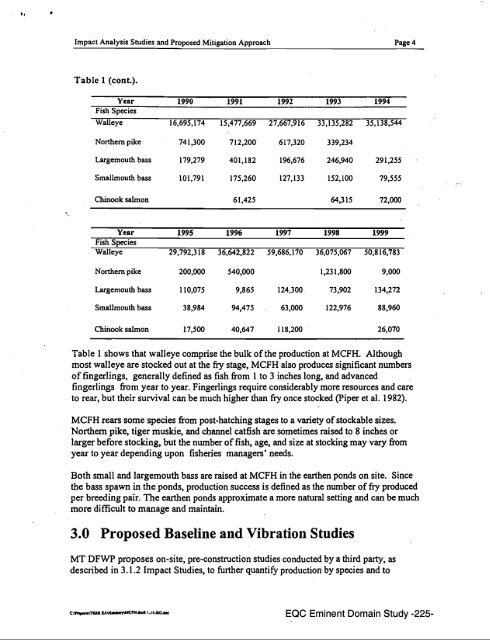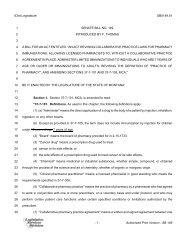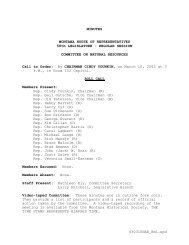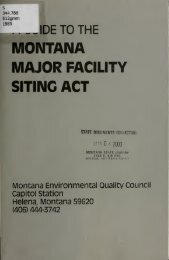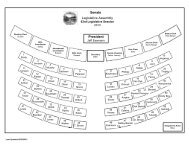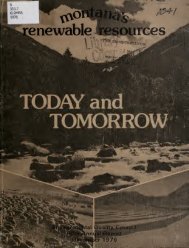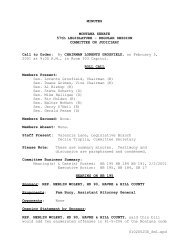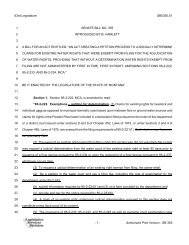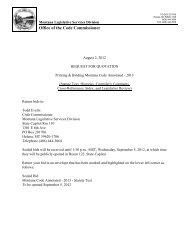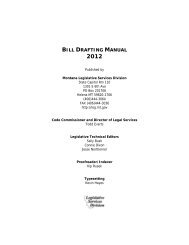Public Comment. Volume III - Montana Legislature
Public Comment. Volume III - Montana Legislature
Public Comment. Volume III - Montana Legislature
Create successful ePaper yourself
Turn your PDF publications into a flip-book with our unique Google optimized e-Paper software.
1<br />
Impact Analysis Studies and Proposed Mitigation Approach Page 4<br />
Table 1 (cont.).<br />
Year 1990 1991 1992 1993 1994<br />
Fish Species<br />
Walleye 16,695,174 15,477,669 27,667,916 33,135,282 35,138,544<br />
Northern pike 74 1,300 7 12,200 617,320 339,234<br />
Largemouth bass 179,279 401,182 196,676 246,940 29 1,255<br />
Smallmouth bass 101,791 175,260 127,133 152,100 79,555<br />
Chinook salmon 6 1,425 64 J 15 72,000<br />
Year 1995 1996 1997 ,1998 1999<br />
Fish Soecies<br />
Northern pike 200,000 540,000 1,23 1,800 9,000<br />
Largemouth bass 1 10,075 9,865 124.300 73,902 134,272<br />
Smallmouth bass 38,984 94,475 . 63,000 122,976 88.960<br />
Chinook salmon 17,500 40,647 1 18,200 26,070<br />
Table 1 shows that walleye comprise the bulk of the production at MCFH. Although<br />
most walleye are stocked out at the fj stage, MCFH also produces significant numbers<br />
of fingerlings, generally defined as fish fiom 1 to 3 inches long, and advanced<br />
fingerlings from year to year. Fingerlings require considerably more resources and care<br />
to rear, but their survival can be much higher than fry once stocked (Piper et al. 1982).<br />
MCFH rears some species fiom post-hatching stages to a variety of stockable sizes.<br />
Northern pike, tiger muskie, and channel catfish are sometimes raised to 8 inches or<br />
larger before stocking, but the number of fish, age, and size at stocking may vary fiom<br />
year to year depending upon fisheries managers' needs.<br />
Both small and largemouth bass are raised at MCFH in the earthen ponds on site. Since<br />
the bass spawn in the ponds, production success is defined as the number of fry produced<br />
per breeding pair. The earthen ponds approximate a more natural setting and can be much<br />
more difficult to manage and maintain.<br />
3.0 Proposed Baseline and Vibration Studies<br />
MT DFWP proposes on-site, pre-construction studies conducted by a third party, as<br />
described in 3.1.2 Impact Studies, to hrther quantifL production by species and to<br />
C . ~ , ~ LA- M<br />
1.14.mad<br />
EQC Eminent Domain Study -225-


